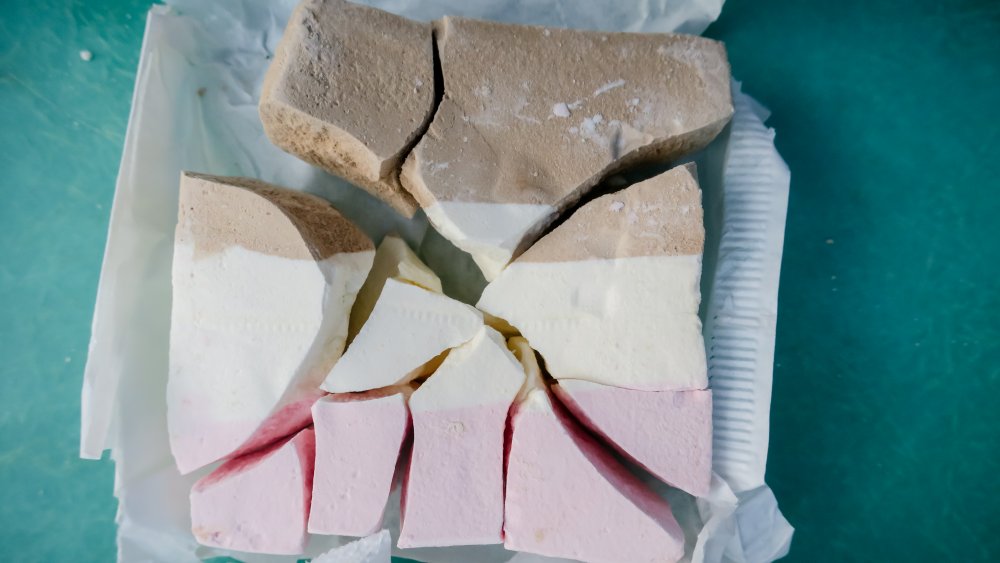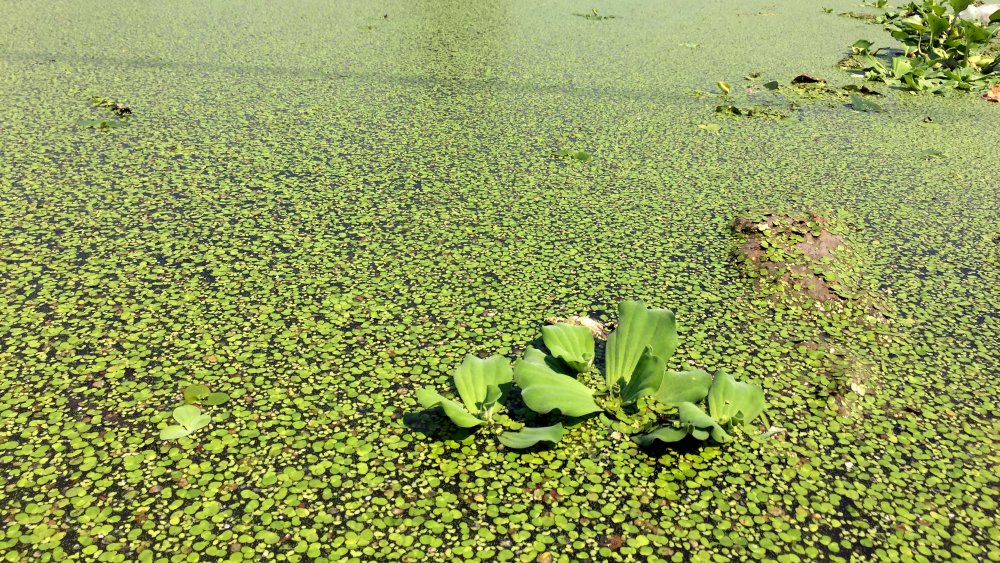The Food Astronauts Really Eat In Space
The logistics of possibly sending someone to Mars — let alone into even deeper space – are immense. Every aspect has to be thought about and then rethought, especially food. When one hurtles through space, there's no chance to stop off at a rest area as one would on the I-90. As NASA's page on space food asks, "How would you feed a crew of six astronauts on an 80-million-mile, three-year mission to Mars, where there are no grocery stores, gardens, farms, fertile soil or resupply vehicle?"
So far, experimentation has focused on preservation techniques, updating the same processes used by the colonial explorers who started heavily salting their foodstuffs to preserve for long periods of time. The most famous and successful of these updates is the freeze-dried space food, like the ice cream in the image above. On their website, the Smithsonian National Air and Space Museum explains that the process entails freezing the food and then quickly shoving it into a vacuum chamber to remove all the moisture from the food. Frozen and without any moisture to contribute to a decaying process, these foods can last indefinitely. For the foods needing water to remoisturize them, the astronauts attach a water gun to the bag and inject either hot or cold water.
As iconic as astronaut ice cream is, however, these preservation techniques don't address the question of producing food in space, which astronauts will need to do if they are to seriously explore further than the moon.
That's the future of astronaut food?
In mid-July, Dr. Barbara Demmig-Adams, professor of Plant Ecology and Molecular Biology at the University of Colorado, Boulder, had a piece published on The Conversation that explained how duckweed could serve as the basis of the interplanetary explorer's diet.
Duckweed are, as described by the U.S. Forest Service, the smallest known flowering plants. They consist of a single oval leaf that floats on the surface of ponds and lakes and are a common pondweed problem according to various pond-keeping websites due to how fast they proliferate. However, as Dr. Demmig-Adams points out, this proliferation can work wonders in a confined area, like a spaceship: "With just a little bit of experimentation, our team determined that under relatively low-intensity light – less than half as intense as midday sun on a clear summer day – duckweed accumulates more zeaxanthin than other fast-growing plants do in full sunlight while still maintaining the same incredible growth rate and other nutritional attributes that make it the perfect plant for a space farm." The aforementioned zeaxanthin matters because that helps with radiation damage, eye disease, and other issues faced by astronauts.
Now, though, armadas of duckweed stuffing astronauts are still in the abstract. Further testing of how to grow duckweed is needed. But again, like the experiments with surgeries in space, the discovery that we can make duckweed more nutritious under more restricted circumstances could also prove useful to how we eat on Earth.

